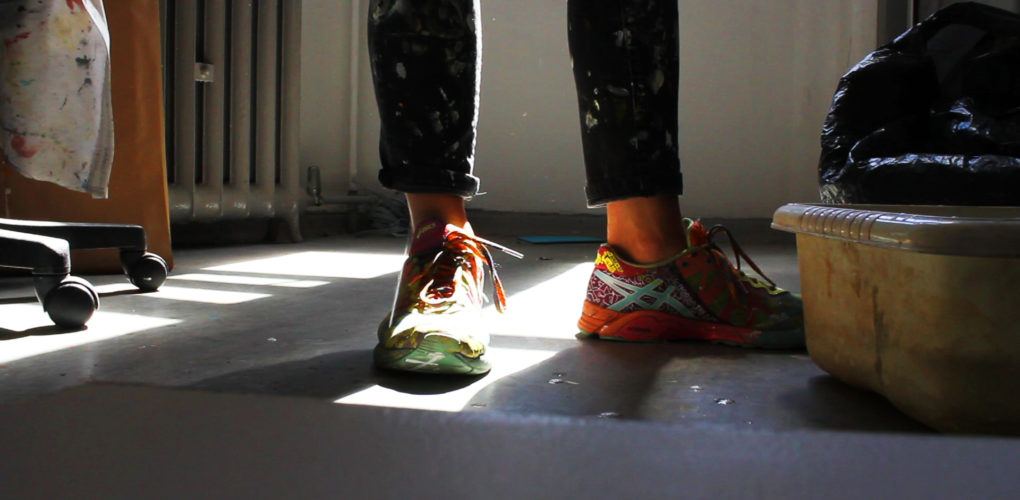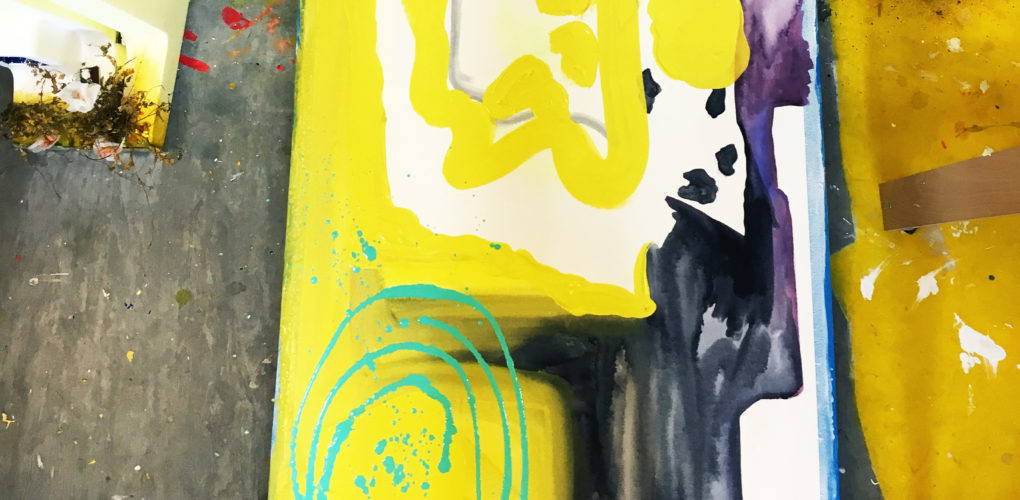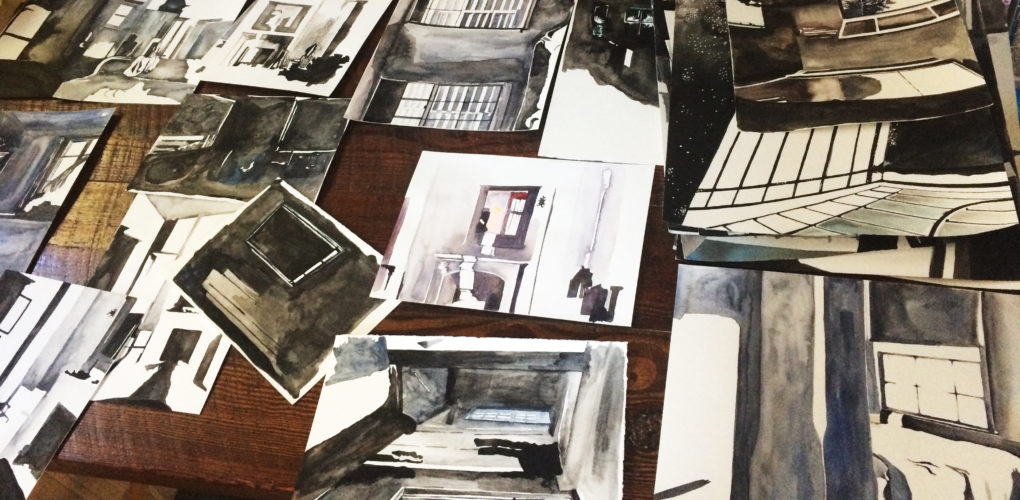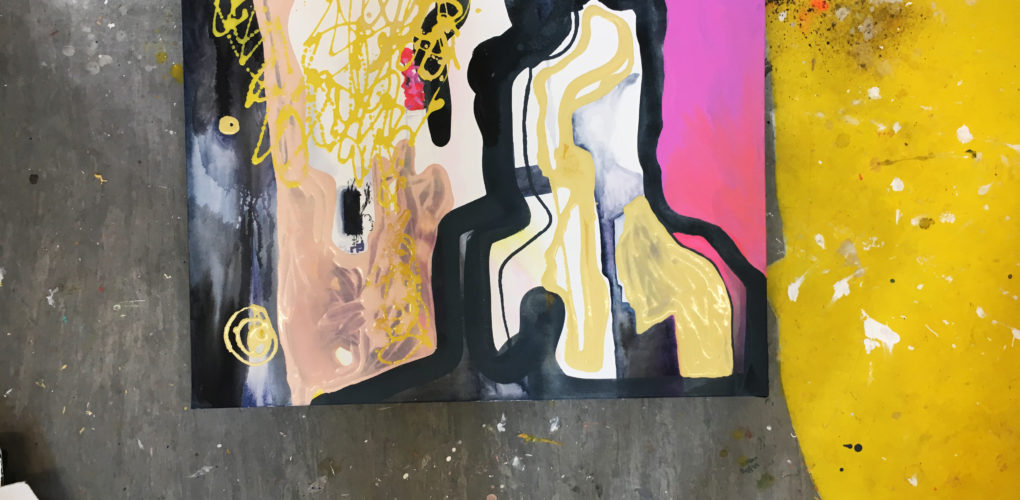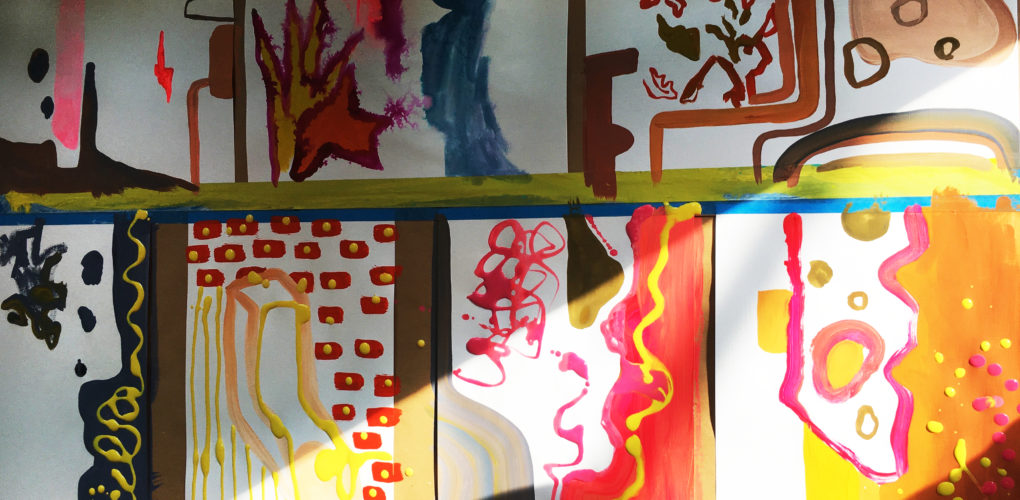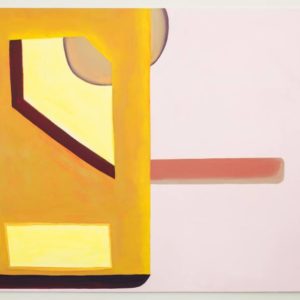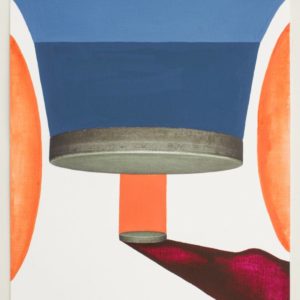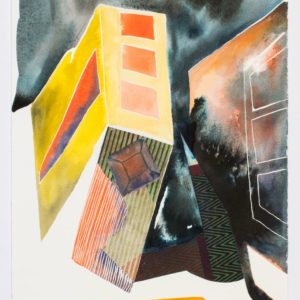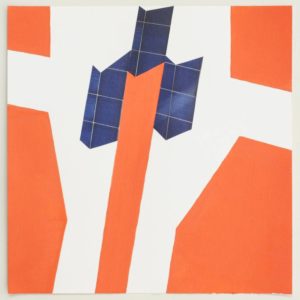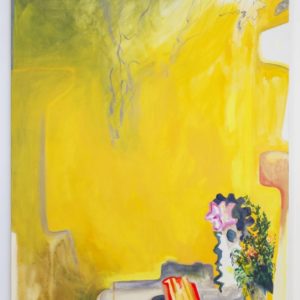One to Watch
 The Sensory Experience of Cara Lasell Bonewitz
The Sensory Experience of Cara Lasell Bonewitz
Cara Lasell Bonewitz’ artistic practice is about experience — her colorful abstracts are as much about their form and color as they are about the viewer’s interpretation of them. Cara finds inspiration in architecture and manmade structures, wallpaper patterns, decorative textiles, and products of consumerism — used packaging materials, discarded metro tickets, old candy wrappers. She combines patterns and forms to create a sort of tension between different elements of the work, and relies on a spontaneous creation process to rid herself, and the viewer, of all expectations.
Cara is an MFA candidate at the Glasgow School of Art and received a BA in Studio Art and History from Yale University. She has participated in artist residencies in Mandelieu-la-Napoule, France, and Key West, Florida, and her works have been featured in exhibitions in Glasgow, Los Angeles, London, and New York.
What are the major themes you pursue in your work?
My work engages with new materials, sensory experiences, and methods of installation— both their tactile and visual qualities along with the process and experience of working with them— as a way to broaden my understanding of how I perceive environments and the objects within them. Through painting, drawing, installation and video, my work explores the intersection between subconscious, intuitive understanding and articulated, intellectual knowledge to better understand how we experience environments and the things within them.
How did you first get interested in your medium, and what draws you to it specifically?
Initially, the conventional mediums of two-dimensional artwork, i.e. pencil, paint, paper, ink, etc. interested me because they were the most accessible and they formed the foundation of my formal, institutional art education. Because of my familiarity with the medium, it offered the most intuitive approach to immediately document, record, and understand my perception of my surroundings. The simple, humble act of putting pen or paint to paper as a way of bearing witness continues to resonate with me. Recently, I’ve become more interested in other ways of experiencing the world and alternative modes of perception, leading me to explore a wider variety of mediums such as installation, video, photography, and even scans or photocopies. I am reluctant to confine myself to one medium because they all inform one another.
How has your style and practice changed over the years?
Sometimes, when I look over my work from the past twelve years I struggle to comprehend how all of it came from one person, let alone from me! As I look back on it I can see work made by a range of different artists and personalities, and perhaps in some ways, this is true. As I’ve changed over the years, so has my work. And yet, at the same time, I can see threads of one person, one mindset, one artistic approach that run throughout the various iterations of my creative expression. My work has always expressed a formal interest in space, light, shadow, and color. Additionally, there is an overarching concern with modes of representation, veils and coverings, of organizing and understanding my world, my sense of reality, a personal cosmology.
Can you walk us through your process? Do you begin with a sketch, or do you just jump in? How long do you spend on one work? How do you know when it is finished?
That is such a difficult question! My process varies to suit each theme or idea. Most of the time I just jump right in and have a conversation with the work or the project as it emerges. I greatly enjoy the process of thinking through making and like to remain open to the various directions in which an idea may travel. But as I work through ideas and let my work speak to me, I also develop visions and ideas that require careful planning and attention to detail.
If you couldn’t be an artist, what would you do?
I would be a baker or a therapist. A baker, because baking brings together a magical combination of art and science, enlisting all of the senses alongside more measured, analytical thinking. A therapist, because I find the process of understanding individuals’ perspectives, questions, issues, etc. to be absolutely fascinating.
Who are your favorite writers?
The Yellow Wallpaper, by Charlotte Perkins Gilman Why We Look at Plants, in a Corrupted World by Hu Fang Modern Nature by Derek Jarman An interview with Ann Hamilton from the podcast On Being And finally, as cliched as it is, I find endless wisdom in Rainer Maria Rilke’s Letters to A Young Poet. He speaks beautifully about the importance of solitude, of going into oneself, as painful as it may be, to find the truth of your work.
